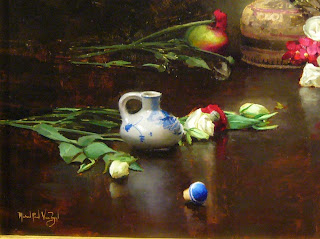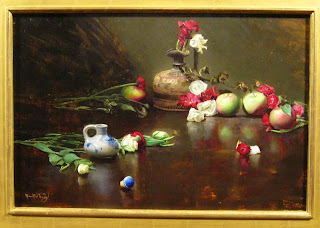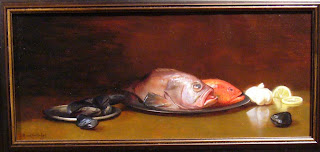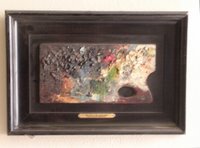
When the P&C moved into its current quarters in the summer of 1921, it was equipped with two live-in caretakers in the form of a Mr. and Mrs. Penfield. The Penfields lived in the basement and were beset with bugs--shortly after moving into the house, the club gave the Penfields $1.50 for "Bug-powder." Apparently they were beset by heat as well, and the club split the ice bill with them 2/3rds (the P&C) and 1/3 (the Penfields). Mrs. Penfield helped with the opening of the new club house on October 1, 1921 (she was paid $3.50 for her services at the soiree), but the Penfields didn't last long. By February 1922, they were no longer welcome at 1012 N. Dearborn: they received two months notice that their "tenancy in these premises will cease" after April 30, 1922.
With the departure of the Penfields in 1922 commenced the Joe Haynes era. Joe Haynes was the P&C's factotum, cook, drink-fixer, and general handyman--Joe washed the window curtains and wheeled coal into the house to fill the coal bins. When there was a sit-down function at the club house, he served dinner; he greeted people at the door for the gallery. And I suspect that Joe had connections that served him and the members well during Prohibition.
In April 1923, these advertisements appeared in the club newsletter:


At a salary that ranged mostly between $85 and $115 per month, Joe remained with the P&C for years. He was Jeeves to the P&C's Bertie Woosters. But there were flies in the o--these Woosters often lacked for green.
For example, in July 1926, at the instance of
Emory Seidel, one J.W. Hansen was called to account before a special board meeting "to answer to the following charge: 'We the following members charge J.W. Hansen with actions unbecoming a member in running a bill with our chef Joe and refusing to pay with loud language. Emory Seidel and Leo Marzolo, House Com. Carried." (The results of the special meeting are not recorded.)
An unpaid debt to Joe also led to the expulsion from the club of Fred Gray, who painted the portrait of Leo Marzolo and the "Portrait of a Young Girl" hanging in the club's library today. (Gray's "Portrait of a Young Girl" was exhibited at the Art Institute
for the 1945 fiftieth anniversary of the P&C, and along with the Marzolo portrait is my favorite artwork in the club's collection.)

(From the June 1923 club newsletter.)
By 1932 Gray's debt to Joe was more than $150, and the club was forced to consult with its attorney, Charles Selleck, about the "legal procedure necessary to attach money Mr. Gray would realize from pictures in hands of Chicago Galleries Association for the purpose of satisfying the debt he owes Joe Haynes, the Club caretaker." Gray's paintings didn't sell, and the club booted him out in 1932.
From the club's June 1931 newsletter:

(The "cut" the author is referring to is the woodcut reproduced at the top of this post.)
In the summer of 1940, another member, one Mr. McKee, was reminded of the "by-law concerning indebtedness to Joe Haynes" and was told to clear up his indebtedness to Joe at once.

(From the February 1923 club newsletter.)
On December 2, 1941, Joe's salary was increased to $82.50 per month. That gives an idea of the magnitude of the depression, since Joe had been earning $85 per month in 1923--18 years earlier.
In August 1942, Joe was the victim of an assault by a lawyer whose offices were next door to the club, where the Ruth Page Foundation is located now. (In 1942 that property belonged to the
Independent Order of Forestry, a fraternal organization.) It seems the lawyer pulled a gun on Joe and another man and was thereafter arrested.

Joe remained with the P&C until 1959. At retirement, his salary was $150 per month. In reviewing the minutes of the club meetings from 1922 to 1959--monthly meetings that spanned the thirty-seven years of his service--I did not find a single complaint or criticism of Joe.
When he retired, Joe was replaced by another live-in couple, a Mr. and Mrs. Krsnik.
But then Joe has never really been replaced, has he?
 Our country's constitution, ratified in 1789, requires that an "actual enumeration" of our population be made every ten years. This is vital to our democracy--the number of representatives each state has in the House of Representatives varies by population.
Our country's constitution, ratified in 1789, requires that an "actual enumeration" of our population be made every ten years. This is vital to our democracy--the number of representatives each state has in the House of Representatives varies by population. 




























































